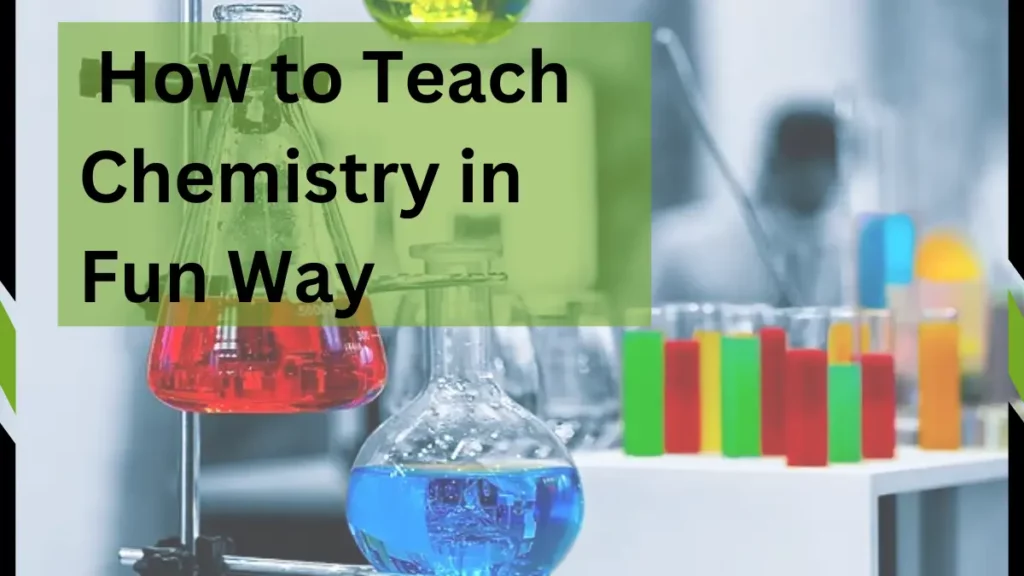How to Teach Chemistry in Fun Way
Introduction
Teaching chemistry, often viewed as a challenging subject, can be transformed into an enjoyable and engaging experience. This article explores various innovative methods to teach chemistry in fun and effective ways, aiming to ignite students’ interest and facilitate deeper understanding.

Interactive and Hands-On Experiments
Colorful Chemical Reactions:
Use experiments that result in vivid color changes, like the reaction between phenolphthalein and sodium hydroxide, to captivate students’ attention.
Edible Experiment:
Incorporate edible experiments, such as making rock candy to demonstrate crystallization or using cabbage juice as a pH indicator.
Technology Integration
Virtual Reality (VR) and Augmented Reality (AR):
Implement VR and AR to create immersive learning experiences, allowing students to virtually interact with molecular structures and chemical reactions.
Interactive Online Platforms:
Use platforms like ChemMatters and Khan Academy to offer interactive and visually engaging content that simplifies complex topics.
Gamification of Learning
Chemistry Board Games:
Introduce board games focused on chemistry concepts, such as element matching games or reaction pathway games.
Digital Chemistry Games:
Use educational video games that allow students to experiment and learn in a virtual lab environment.
Artistic Approaches
Chemistry through Art:
Encourage students to express chemical concepts through art, like drawing molecular structures or creating reaction diagrams.
Chemical Drama:
Organize role-plays where students act out chemical reactions or historical discoveries in chemistry.
Real-World Applications
Everyday Chemistry:
Show how chemistry is involved in everyday life, like in cooking, cleaning, or even in the colors of autumn leaves.
Industry Visits:
Arrange visits to local industries or laboratories where chemistry is applied, providing students with real-world context.
Innovative Teaching Strategies
Flipped Classroom:
Implement a flipped classroom model where students first explore content at home and then engage in interactive activities in class.
Peer Teaching:
Encourage peer teaching, where students explain concepts to each other, enhancing understanding and communication skills.
Environmental and Green Chemistry
Eco-Friendly Experiments:
Focus on experiments that use non-toxic, environmentally friendly chemicals, teaching the importance of green chemistry.
Projects on Environmental Impact:
Assign projects that explore the impact of chemicals on the environment, fostering awareness and responsibility.
Inclusion of Chemistry History and Ethics
Historical Context:
Teach the history of chemistry discoveries, linking past developments to modern concepts.
Ethical Discussions:
Lead discussions on the ethical aspects of chemistry, such as its role in environmental issues or medicine.
Conclusion
Making chemistry teaching fun and engaging is key to unlocking students’ potential and fostering a lasting interest in the subject. By incorporating hands-on experiments, technology, art, and real-world connections, educators can create a dynamic and stimulating learning environment. These methods not only make chemistry more accessible but also inspire creativity and critical thinking among students.



Leave a Reply